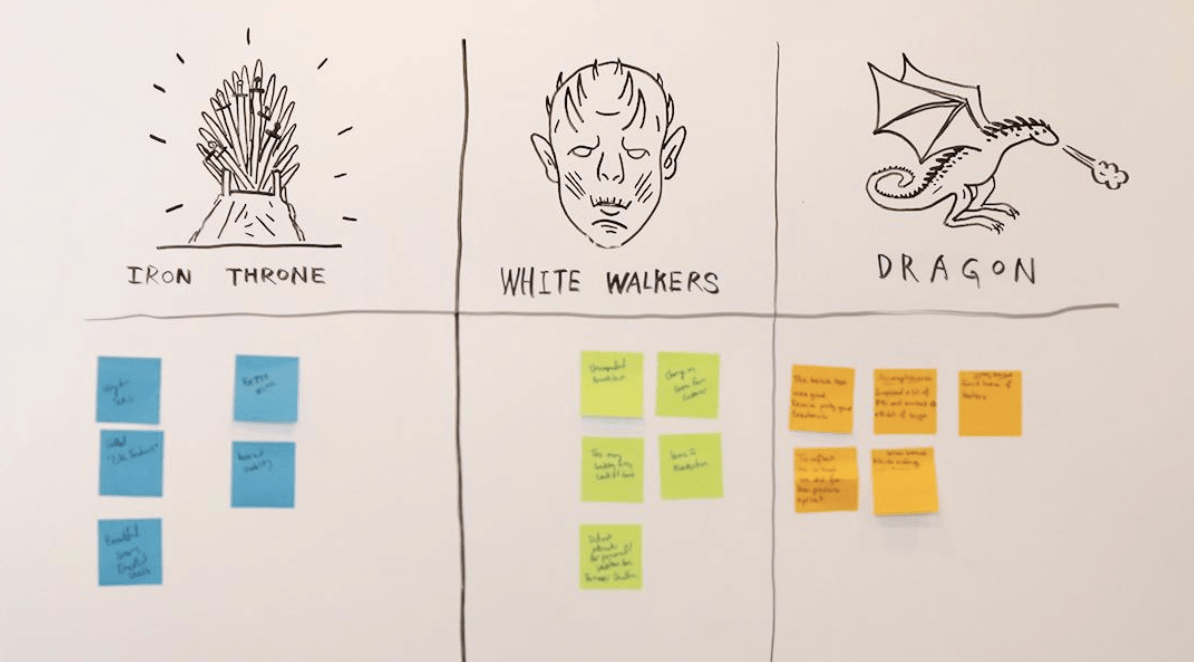What are retrospectives?
Ever thought about why you keep making the same mistakes? Our Senior Developer, Gel Goldsby speaks about the power of retrospectives, how they work, and what benefits they can bring to your team.
In life, we always strive to get better at things. We do this by tweaking our ‘behaviour’ in an attempt to improve. We work out what to tweak, by analysing our past outcomes. For example, let’s say you and a friend are baking a cake and when it comes out of the oven it hasn’t risen. You ask each other, “Why?” Google says maybe you’re using the wrong type of flour or over-mixing.
After chatting with each other, you hypothesize that over-mixing must be the culprit because you used an electric mixer instead of hand mixing. So, on your next attempt, you lessen your mix times and the resulting cake has a nice airy texture. Congratulations! You have successfully retrospected!
The point is, to achieve the desired outcome of any task requires 1) an analysis of what happened, 2) theories of what can be done differently or continued and 3) the creation of experiments to test if they produce the desired outcome. A retrospective encourages this feedback cycle as it makes the team analyse the past so that next time will be better.
What do retrospectives mean to the Product Development team at Unruly?
Retrospectives are a time for us to look back on the last iteration (usually the previous two weeks) or any specific incidents/events. It helps us identify what has happened (both good and bad), reflect on how those events impact us (both positively and negatively) and think about what we can do differently next time. Retrospectives encourage an experimental ‘let’s just try it’ attitude.
“At regular intervals, the team reflects on how to become more effective, then tunes and adjusts its behaviour accordingly.”
— an Agile Principle
What are the goals of a retrospective?
The ultimate goal of a retrospective is to come away with both learnings and actionable steps as to what we should do differently (or continue to do) next time.

“Those who do not learn from history are doomed to repeat it.”
— writer and philosopher George Santayana
How often should you do a retrospective?
There is no hard rule but generally, you want to do them frequently enough to ensure that the team’s on the same page. Having this tight feedback loop allows us to continuously recalibrate our direction. If you don’t recalibrate regularly, you end up needing a much larger correction.

Take, for example, Blockbuster video, a popular home video rental service (pre-2013), that did not move fast enough when digital and online videos started to become popular. As a result, the company went bankrupt when the home video rental market pretty much became obsolete. Perhaps they did not hold frequent enough retrospectives to be able to adjust to the changing market.
Can’t they get rather negative?
It’s certainly easy to do! But we remind ourselves that we are generating ‘learnings.’ Remember it’s not just about reflecting on what went wrong, but also what went right and how we can do more of it. And, we are not trying to find/agree on the answer, but rather, identify ways that can move the team forward.
We use the Prime Directive to avoid a blame culture (the antithesis of what retrospectives are!):
“Regardless of what we discover, we understand and truly believe that everyone did the best job they could, given what they knew at the time, their skills and abilities, the resources available, and the situation at hand.”
— Norm Kerth, Project Retrospectives: A Handbook for Team Review
Should we do retrospectives?
Yes! Retrospectives can be used by everyone and are not specifically for software development teams. For example, the UK Department of Health for Social Care is made up of four non-software-building teams and hold regular retrospectives to learn from the work of the previous two weeks.
Find ways to keep retrospectives fun!

Right, I’m convinced. How do we retrospect?
You want to create an atmosphere that encourages participants to be open to express their own opinions as well as hear other perspectives without judgment. So it’s important to find an objective facilitator (one who is not involved) and use a retrospective format (e.g. game) to help structure the meeting (do a Google search for ‘Agile Retrospective’).
The role of a facilitator ensures that not only that the conversation flows, but that everyone gets involved (i.e. equal participation), a root cause (the “why” not just the “what”) is identified, actionable steps (or working agreements) are suggested/proposed, and tangents are avoided.

Like what you’ve heard? Unruly’s a place where great people can do great things – every day. Our superpower is to take passionate, collaborative and empowered people on a mission to #DeliverWow. Find out what roles we’re hiring for.
